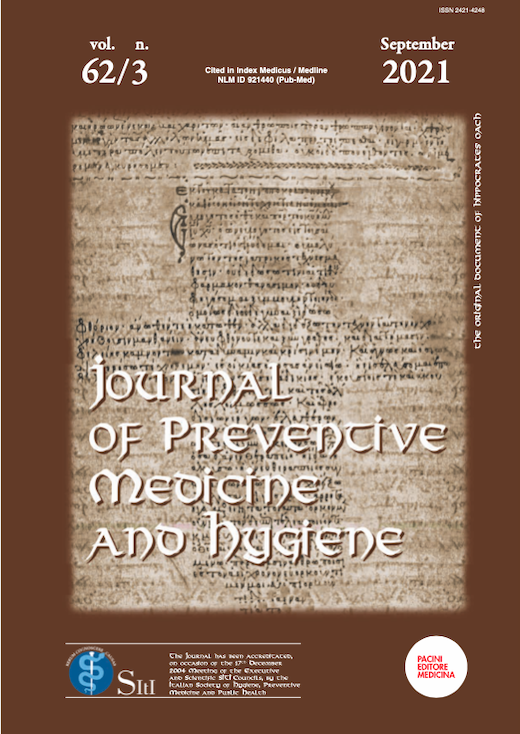Abstract
Ignác Fülöp Semmelweis (1818-1865) and Florence Nightingale (1820-1910) were two important personalities in the history of medicine and public health. They dealt with the problem of handwashing. Semmelweis is also known as the “father of hand hygiene”; just in 1847 he discovered the etiology and prophylaxis of puerperal sepsis and imposed a new rule mandating handwashing with chlorine for doctors. He also tried to persuade European scientific community of the advantages of handwashing. During the Crimean War, in Scutary (Italy), Florence Nightingale strengthened handwashing and other hygiene practices in the war hospital where she worked and her handwashing practices reached a reductions in infections. But unfortunately the hygiene practices promoted by Semmelweis and Nightingale were not widely adopted. In general handwashing promotion stood still for over a century. During current pandemic SARS-CoV-2 (Covid-19) one of the most important way to prevent the spread of the virus is still to wash the hands frequently.
References
[1] McIntyre N. Ignác Fülöp Semmelweis (1818-65). J Med Biogr. 2009 Feb;17(1):22. doi: 10.1258/jmb.2008.008008.
[2] Semmelweis, Ignaz (1861). Etiology, Concept and Prophylaxis of Childbed Fever. K. Codell Carter (translator and extensive foreword). University of Wisconsin Press, September 15, 1983. pp. 87–88. ISBN 0-299-09364-6.
[3] Tonse N.K. Raju. Ignác Semmelweis and the Etiology of Fetal and Neonatal Sepsis. Journal of Perinatology (1999) 19(4) 307-310.
[4] La Rochelle P., Julien A.S. How dramatic were the effects of handwashing on maternal mortality observed by Ignaz Semmelweis? Journal of the Royal Society of Medicine (2013); 106(11) 459–460 DOI: 10.1177/0141076813507843
[5] Citrome L. Happy Birthday Ignác Semmelweiss! Now, Let's All Wash Our Hands! Int J Clin Pract. 2018;72:e13256. doi.org/10.1111/ijcp.13256.
[6] Nightingale, F. (1860). Notes on Nursing: What It Is and What It Is Not. London: Harrison and Sons.
[7] WHO Guidelines on Hand Hygiene in Health Care. First Global Patient Safety Challenge Clean Care is Safer Care. World Health Organization, WHO Library Cataloguing-in-Publication Data, 2009
[8] Simmons BP. Guidelines for hospital environmental control. Section 1. Antiseptics, handwashing, and handwashing facilities. In: Centers for Disease Control and Prevention (CDC), ed. CDC Hospital infections program (HIP) guidelines for prevention and control of nosocomial infections. Atlanta, GA, Springfield, 1981: 6–10.
[9] Garner JS, Favero MS. CDC guideline for handwashing and hospital environmental control, 1985. Infection Control, 1986, 7:231–243.
[10] Allegranzi B, Pittet B. Role of hand hygiene in healthcare-associated infection prevention. J Hosp Infect. 2009 Dec;73(4):305-15. doi: 10.1016/j.jhin.2009.04.019.
[11] Abigail M, Shannon H, Tiffany W, Emma B. Hand Hygiene: A Quality Improvement Project. Biomed J Sci & Tech Res 1(7)-2017. BJSTR. MS.ID.000601. DOI : 10.26717/BJSTR.2017.01.000601
[12] WHO – Interim Recommendation, 1 April 2020
[13] Hillier MD. Using effective hand hygiene practice to prevent and control infection. Nurs Stand. 2020 Apr 29;35(5):45-50. doi: 10.7748/ns.2020.e11552. Epub 2020 Apr 27. PMID: 32337862.

